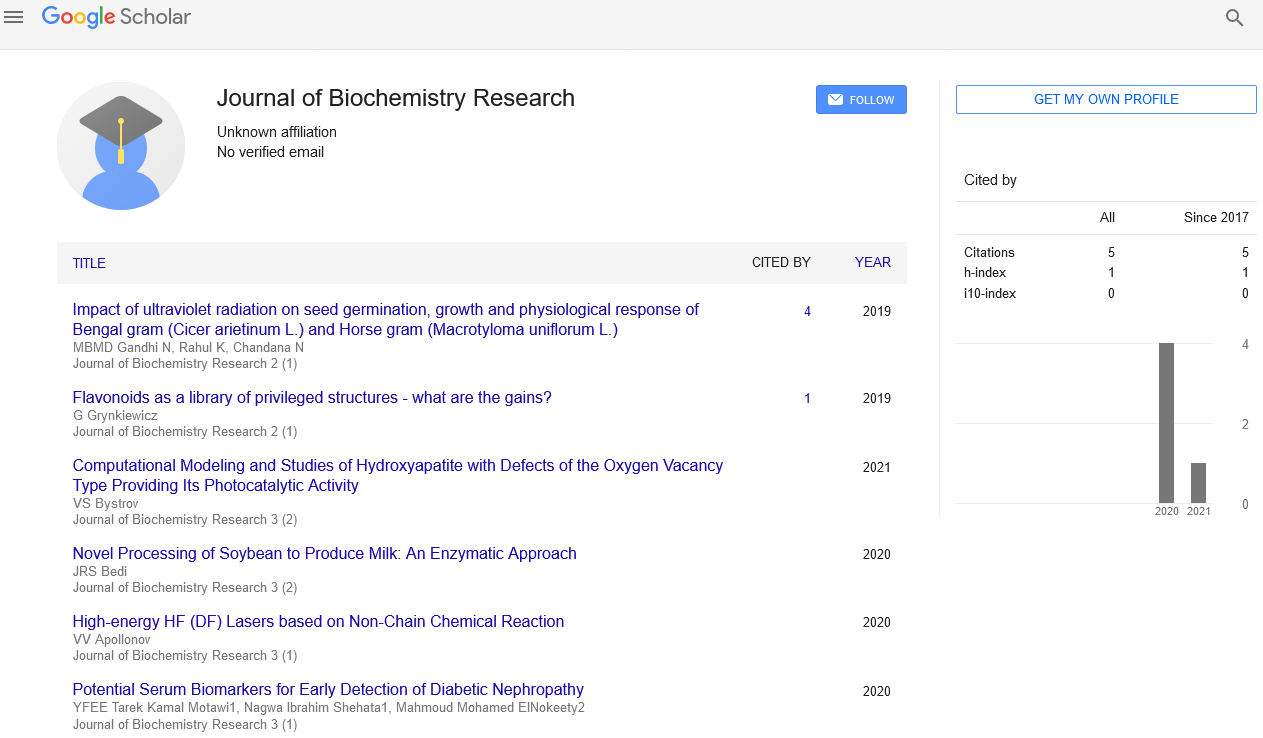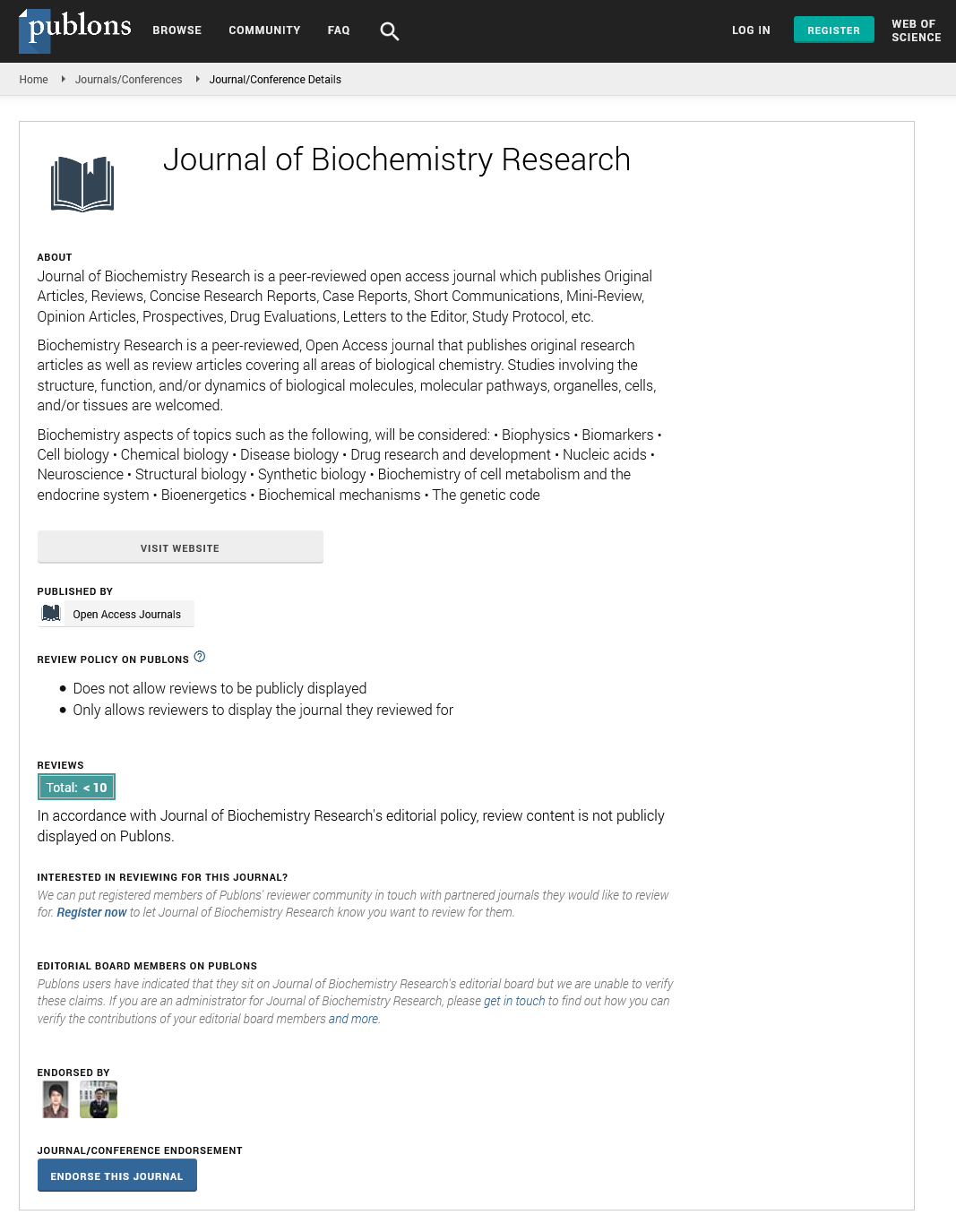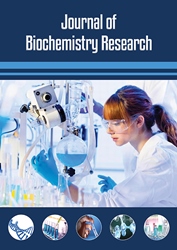Editorial - Journal of Biochemistry Research (2019) Volume 2, Issue 1
The reconstituted human epidermis, RHE: A suitable model to evaluate the effects of environmental pollutants on skin homeostasis
Chung Duong Dinh* and Ngoc Yen Nguyen Thi
Faculty of Pharmacy, Nguyen Tat Thanh University, Ho Chi Minh City, Vietnam
Abstract
INTRODUCTION
Bromhexine hydrochloride is an active ingredient used in the treatment of acute and chronic bronchopulmonary diseases associated with excessive mucus secretion. Clinically, bromhexine enhances mucus transport by reducing the mucus adhesion and activating the ciliated epithelium to transport the phlegm easily out of the respiratory tract [1].
There are currently over 80 brand name and more than 50 domestic companies producing pharmaceutical dosage forms containing this active ingredient. In Vietnam Pharmacopoeia V [2], the determination of bromhexine hydrochloride was studied by spectrophotometric method or potentiometric titration (for material). In addition, some authors have proposed other analytical methods such as the spectrophotometric method for derivatives of bromhexine [3], chromatography [4-6], combined form contains bromhexine [7-10]. However, up to now, no author from Vietnam has published the quantification process of bromhexine hydrochloride by liquid chromatography. Therefore, the purpose of literature research is to develop and validate the quantitative process of bromhexine hydrochloride by liquid chromatography to contribute a technique for routine analysis of bromhexine hydrochloride in raw materials and pharmaceutical dosage forms.
MATERIALS AND METHODS
Instruments and chemicals
Bromhexine tablets 8 mg. HPLC Agilent 1260 system, PDA detector; Mettler Toledo analytical balance (0.01 mg); Arium® pro DI Ultrapure Water System (Sartorius-Germany), pH measurement (Metler Toledo), Potentiometric titration 888 Titrando (Metrohm-Sweden). Methanol, acetonitrile (Merck-Germany), and other chemicals were chromatographic analytical grade. Bromhexine standard was supplied by The Institute of Drug Quality Control-Ho Chi Minh City (IDQC-HCMC).
Preparation of standard solution:Dissolve bromhexine standard in the mobile phase to obtain the concentration of 20 µg/ml; use the best in a day.
Preparation of sample solution: Twenty bromhexine tablets were ground to a fine powder and mix well. Weigh the amount of powder equivalent to the average weight of one 30 mg bromhexine tablet and transfer to a 100 ml volumetric flask. Add 35 ml of methanol in the flask, ultrasound for 15 minutes, and fill up to the mark with methanol. The liquid continuously passes through the filter paper, then 5 ml filtrate was diluted to 20 ml with mobile phase and filter through a 0.45 µm membrane for chromatographic injection.
Optimization of chromatographic conditions
The optimized conditions for the chromatographic procedure were obtained through two steps. Firstly, different factors of mobile phases were surveyed on a chromatographic a HIQ SilC18 column, including (i) a mixture of methanol and acetonitrile in various proportions, pH, and buffer solutions. Secondly, the response surface methodology was used to optimize three independent variables of chromatographic conditions: (x1) concentration of organic solvents (methanol), (x2) concentration of Orthophosphoric Acid (OPA) in mobile phase, and (x3) flow rate. Each variable was assigned with three levels (-1), (0), and (+1) (Tables 1 and 2), and a total of twenty experimental runs with the different combinations of variables were presented in Table 1.
The second-order polynomial function was established to clarify the mathematic relationship between responses (y) and three independent variables (xi) as the following function (1).
Other chromatographic conditions: HPLC Agilent 1260 system (Gremany) with PDA detector, detection wavelength at 247 nm, column temperature was maintained at 40°C, and the injection volume was 20 µL. HPLC system was set up with HIQ SilC18 column (250 mm x 4.6 mm; 5 µm) as a stationary phase, the corresponding precolumn. Isometric elution with a mixture of MeOH and 0.09% OPA solution (60:40, v/v) at 0.9 ml/min. The observed amount of bromhexine recorded by HPLC system in comparison with the label was calculated as the equation:
Validation of analytical procedure
The analytical method was validated according to ICH guidelines [11] for system suitability, selectivity, linearity, precision, accuracy, Limit of Detection (LOD), and Limit of Quantitation (LOQ).
RESULTS AND DISCUSSION
Optimization of chromatographic conditions
High-performance liquid chromatography is a separation technique with many advantages: fast, sensitive, repeatable, and high accuracy method. Thus this is considered one of the leading techniques in pharmaceutical quality control. However, the HPLC method is affected by factors of stationary phase (normal phase, reverse phase, particle size, manufacturer); Mobile phase (components of the organic solvent, buffer solution, pH); System (manufacturer, injection, flow rate, column temperature, detector); Environment (location, temperature, humidity) and the analyst. Initially, the screening of various variables that influence the responses was designed according to the Plackett-Burman matrix with 05 input variables in 12 experiments, the experimental results are summarized in Table 2.
CONCLUSION
A quantitative method of bromhexine in tablets by HPLC system was developed and optimized using Response surface methodology software, and the influence level was analyzed by ANOVA analysis. The procedure was validated according to ICH guidelines with criteria including selectivity, inter-day and intra-day precision with RSD of <2%, and accuracy of 99.5-99.8% in the linear range of 2-40 µg/ml. The procedure was applied to determine the concentration of 8 mg bromhexine tablets and compare the results with the method suggested in the Vietnamese Pharmacopoeia V. ANOVA analysis showed that the results were not significantly different (P>0.05) between 2 methods. From the achieved results, this study can be developed for application in controlling the content of bromhexine in material and tablet products.
References
- MO Health. Medical Publishing House. 2018.
- MO Health. Medical Publishing House. 2017.
- A Narayana, CN Rao, K Sivakumar. Indian J Advances Chem Sci. 2015, 3(2), 128-132.
- S Liu, S Feng, G Huang, X Li. J Guangdong Coll Pharm. 2007, 23, 162-168.
- S Li. Anhui Med Pharm J. 2008, 2.
- L Shuhua, Z Zhigang. Chinese Pharm Affairs. 2008, 1.
- G Bazylak, LJ Nagels. J Pharm Biomed Anal. 2003, 32(4-5), 887-903.
- A Porel, S Haty, A Kundu. Indian J Pharm Sci. 2011. 73(1), 46.
- PM Njaria, KO Abuga, FN Kamau, HK Chepkwony. Chromatographia. 2016, 79(21-22), 1507-1514.
- L Sonawane, S Bari. Pharm Anal Acta. 2016, 1, 107.
- IHT Guideline. International conference on harmonization, Geneva, Switzerland. 2005.


